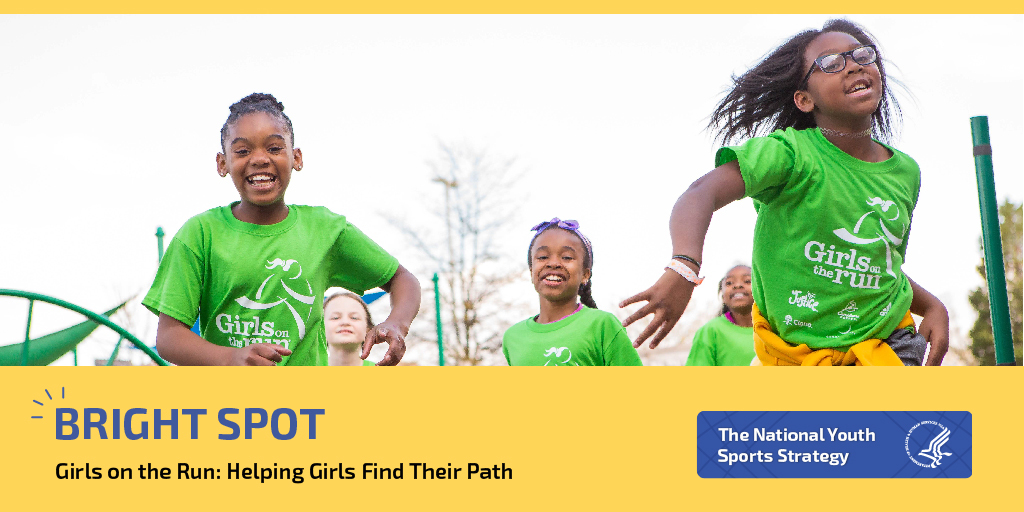From the National Youth Sports Strategy Bright Spots, a series that highlights how successful programs are boosting youth sports participation across the Nation.
Girls on the Run is a national, not-for-profit program that works to close the participation gap through physical activity-based, positive youth development programs for girls in grades 3 to 8.
Participants meet after school twice a week to learn life skills through interactive lessons and running games. Over the course of each 10-week session, girls design a community service project and work toward a celebratory, end-of-season 5K run.
Allison Riley, Senior Vice President, Programming & Evaluation, says their noncompetitive approach helps Girls on the Run appeal to a wider audience. “The goal is not to train Olympic athletes,” she says. “We want kids to love being physically active so they’ll keep it up long after Girls on the Run.”
Strategies: Champion Diversity and Inclusion
While 72 percent of youth sports coaches nationwide are male, about 95 percent of Girls on the Run coaches are female. The program casts a wide net for these volunteer coaches — no expertise is needed. “You don’t need to be a runner,” Riley stresses. “Some girls are going to walk a lot of their laps, and they need someone to walk beside them.”
The program is working to increase the racial and ethnic diversity of its coaching pool, too. “We want the coaches to mirror the communities,” Riley says. “It’s important for girls to see people of all backgrounds in leadership roles.”
All Girls on the Run coaches complete a national coach training program. “We try to leverage our collective power, not reinvent the wheel at each local council,” says Riley. Online modules and in-person trainings cover the program curriculum and key components of positive youth development.
Girls on the Run has also worked with the National Center on Health, Physical Activity and Disability (NCHPAD) to adapt their curriculum for girls with disabilities. After a successful pilot in 14 local councils, the curriculum adaptations will roll out nationwide in the spring of 2020.
Riley says there is still work to do. Finding accessible locations can be challenging for some communities, where hilly landscapes and grassy running surfaces can be obstacles to inclusion. “We’re continuing to work with the local councils to find ways for everyone to participate.”
Impact: Big Gains for Girls
Since 1996, Girls on the Run has delivered programming to more than 1.7 million girls — more than 200,000 in 2018 alone. The national organization now oversees 200 local councils and 53,000 trained coaches.
In 2016, an independent study of Girls on the Run found:
- Girls who were least active when they started the program increased their overall physical activity by more than 40%
- 85% of girls said they improved in 1 or more of the 5 Cs: confidence, competence, caring, character, or connection
- 97% of girls said they learned critical life skills
Lesson Learned: Keep Every Girl in the Game
Riley says one key to the program’s success is its focus on individual growth rather than competition. “When it’s all about competition, you lose a lot of the kids who haven’t been as active — and those are the kids you’re really trying to reach.”
Girls may build strength and speed, but the lessons go far beyond how to win a race. “Every girl deserves an encouraging, empowering sports experience,” Riley says. “That’s how we’re making a real impact in their lives.”




